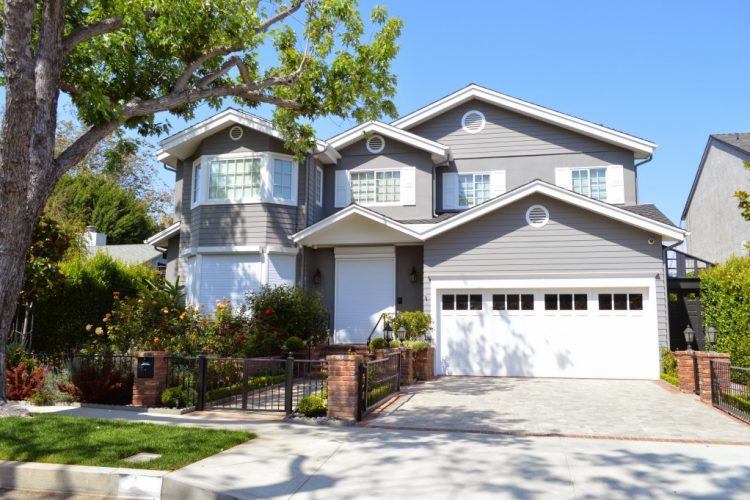If you’re looking to build a home or renovate your current one, the roof is probably one of your largest concerns. After all, roofs shelter us from the weather. Therefore, it’s not crazy to find new materials you can use to build the best roof possible.
Traditional homes usually have standard 3-tab asphalt shingles, most of which need replacement after 80 to 85% of their life at 20 years and about 12 to 15 years if not correctly taken care of. These asphalt shingles are made from a non-renewable petroleum product, which poses an environmental threat. In addition to that, the U.S. EPA procured a study that shows an estimated amount of 11.5 tons of asphalt shingles ended up in landfills, and only 2 tons of it are reusable.
Why choose an eco-friendly roof?
If you’re looking to improve up your roof, you can choose from many roofing alternatives that are both stylish and great for the environment. Throw away your roofing plans that include asphalt shingles and join the eco-friendly side. You will be able to enjoy longer-lasting roofing, recyclable materials, and the freedom of modularity!
Eco-friendly roofs that make an impact
Green roofs
Akin to a Hobbit’s home, green roofs are flat or sloped rooftops devised to house vegetation. Plus, green roofs provide reduced energy consumption through reduced in-house cooling.
Green roofs are mainly split into two types; extensive and intensive. Extensive green roofs are the least expensive and low-maintenance of the two. Extensive roofs are lightweight and composed of a thin layer (less than 150mm) of soil. On the other hand, intensive green roofs include a larger area for gardening and are considered a living space on your roof. Due to green roofs’ modularity, you can incorporate solar panels, irrigation, and a rain storage management system—the sky’s the limit!
Pretty as they may be, installing green roofs are pricey. Green roof projects range from $12,000 to $40,000 depending on the roof’s vegetation and area.
Main benefits:
- Look forward to people ogling your urban architecture. From the lush flora to the vibrant green grass, every part screams sophistication.
- Studies have shown that green roofs positively affect air pollution, reduce carbon dioxide in the atmosphere, and save water from rain.
- Green roofs can save a staggering 958 million rainwater liters if only 20% of homes in Washington, DC, have green roofs.
Things to look out for:
- Expect more work than traditional roofing. Having a green roof is having a garden above your head. Hiring mold removal services are essential for your green roof to grow healthy and avoid slippery walkways.
- Your home’s structure may not support the increased weight. A thin extensive green roof is typically 63 kilograms per square meter, much heavier than traditional roofs.
Metal Roofs

If you don’t fancy having a garden as a roof, but you still want eco-friendly roofing, metal roofs are perfect for your needs. Metal roofs are durable and lightweight, produces less waste in installation, and can even be used for 50 years. Another striking aspect of a metal roof is that it’s made from recycled materials that can either be: tin, copper, steel, aluminum, and more.
Main benefits:
- Experience true modularity. Metal roofs give you the option of designing your roof to your wildest demands. Plus, you’ll save costs if you want a smaller roof.
- Metal roofs are fire-resistant. Because it’s made from a non-combustible material, metal roofs add a layer of safety to your home.
Things to look out for:
- Dents and leaks can occur if your metal roof isn’t properly maintained or if you live in an area where it always hails. Due to its composition, you might be irritated by the continuous sound that rain and hail make on metal roofs.
Solar Roofs
If you’re looking to add form and function to your home, nothing fits better than a solar roof. With solar roofs, you can enjoy a solar panel’s benefits without the disadvantage of installing a racking system. This roof is an excellent way to save on energy bills and reduce carbon footprint.
Main benefits:
- Expect reduced energy costs and an increase in home value. Homes fitted with solar roofs see a rise in the resale value of almost $6000 per kilowatt. Furthermore, solar roofs harness free energy, which you can use as you see fit.
Things to look out for:
- Solar roofs are pricey. Expect to pay between $60,000 to $70,000 to install solar roofs in your house. The price varies on your roof’s slope, pitch, and area.
Choosing a new material for your roof can be a daunting task. Many considerations come into play here; you need to research your area to ensure the benefits you’ll gain using an eco-friendly roof. Furthermore, you need to have a professional at bay to install your roof, especially if it has solar panels. However, choosing an eco-friendly roof that fits your home’s aesthetic will give you the warm fuzzy feeling of pride, knowing you’re helping (not hurting) the environment.

